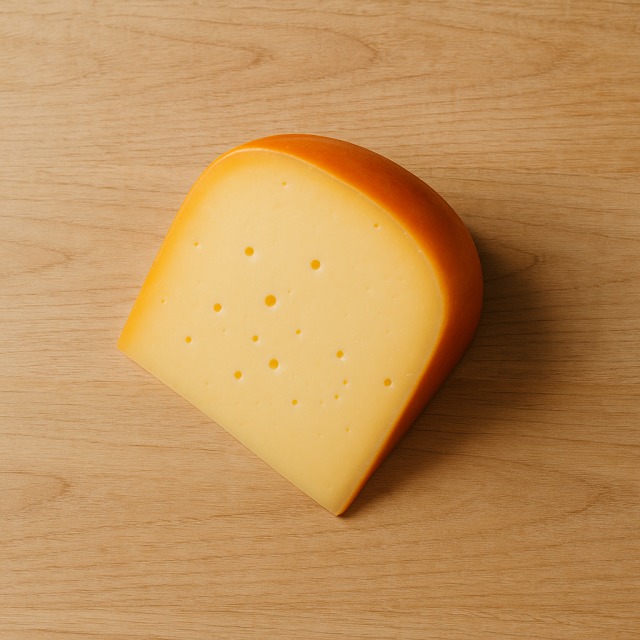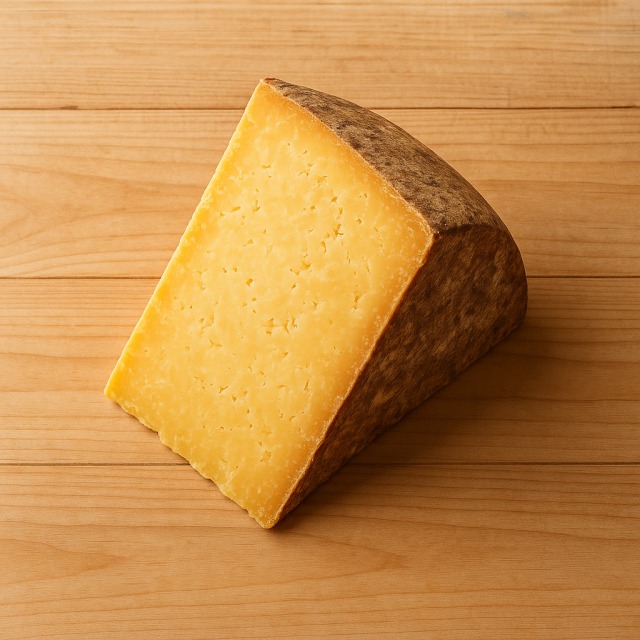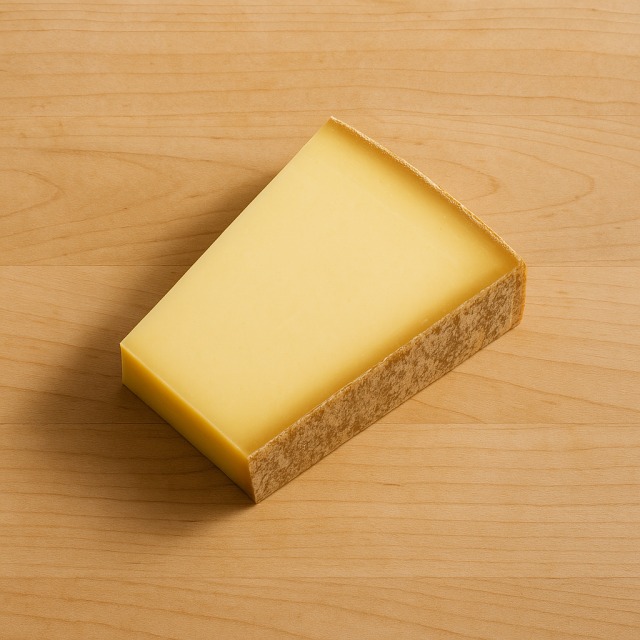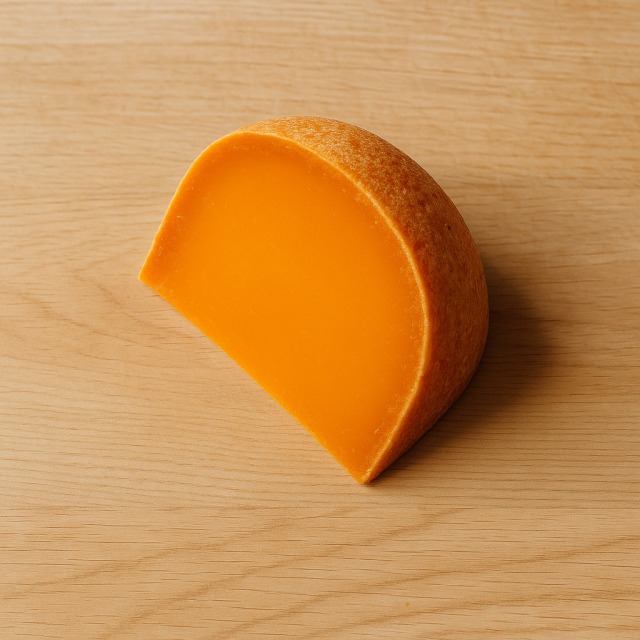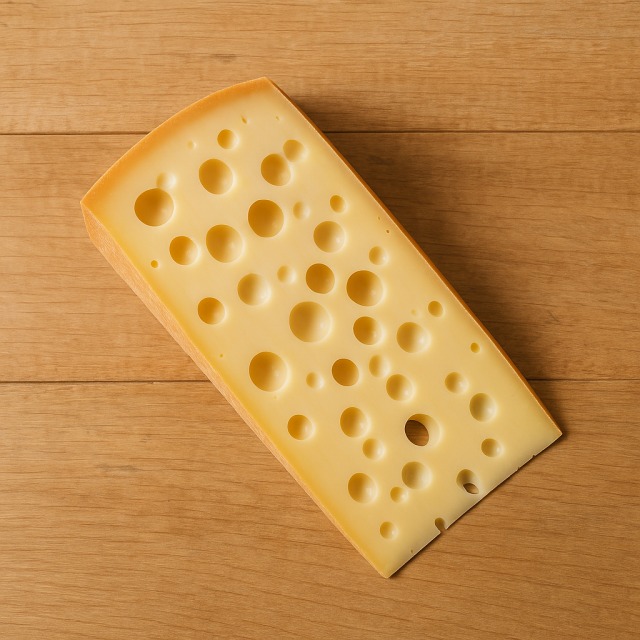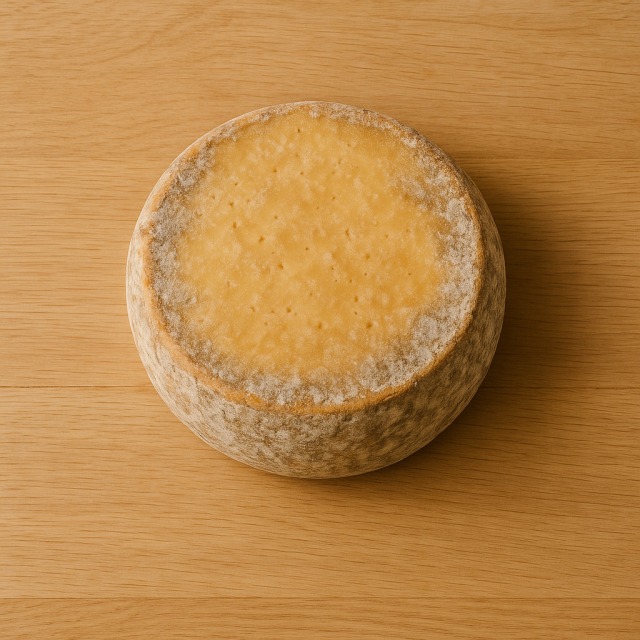Calorie Chart / Cheeses / Beaufort
How Many Calories Are in Beaufort?
Calculation of the nutritional value & Recommended Dietary Intake of Beaufort
For g and a calorie requirement of kcal
| Calories 160 kcal | Proteins 11 g | Lipids 13 g | Carbohydrates 0 g |
| 8% | 15% | 19% | 0% |
Health benefits of Beaufort
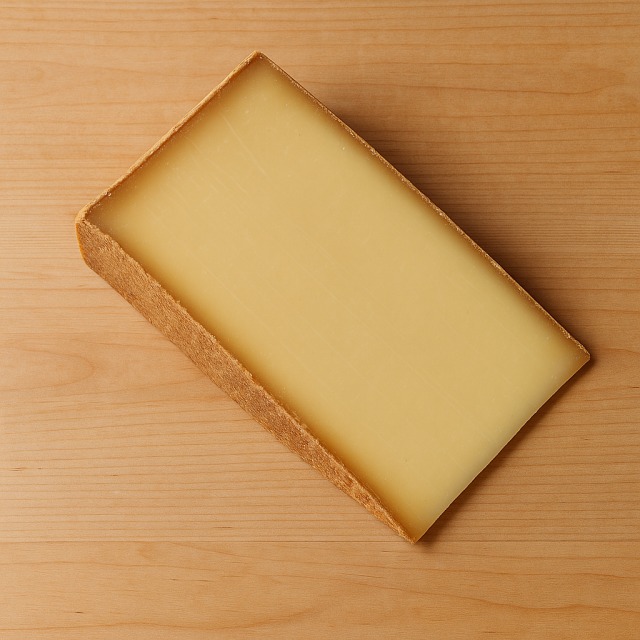
Beaufort - 100g
Calories 401 kcal
Proteins 26.6 g
Lipids 32.7 g
Carbohydrates 0 g
Beaufort is an Alpine cheese renowned for its pronounced nutty flavour and for being a high-calorie option: with 401 calories per 100 g, it clearly belongs to the upper range of cheese calories. Rich in calcium and phosphorus, it contributes to bone maintenance, while its 26.6 g of proteins support muscle upkeep. Because its calories come mainly from 32.7 g of milk lipids, Beaufort also supplies fat-soluble vitamin A, vitamin K, and conjugated linoleic acid (CLA), compounds associated with antioxidant and, supposedly, anti-inflammatory effects.
The cheese is an excellent source of vitamin B12 and zinc, two micronutrients essential for nerve function and immunity. Although its sodium content is significant, the long ageing (5 to 12 months) breaks down lactose almost completely, making Beaufort more digestible for people with moderate lactose intolerance. Maturing in vaulted cellars at 8–12 °C, wheels can weigh up to 45 kg—an artisanal practice that concentrates both flavour and calories.
Historically, Beaufort received an AOP (PDO) in 1968; only milk from the Tarentaise and Maurienne valleys may be used. The production method is close to that of Comté or Gruyère, but the concave heel and creamy texture make it unique. In short, its nutrients justify occasional consumption despite the calorie load, provided salt and saturated fat intake are monitored.
Tips for incorporating Beaufort into a balanced diet
Given its dense 401-calorie profile, integrate Beaufort sparingly in balanced dishes. A classic but sensible idea is a Savoyard fondue: mix equal parts Beaufort, Emmental, and Raclette, then pair with steamed broccoli florets instead of bread to cut calories while boosting fibre.
For an energy-controlled lunch, grate 20 g of Beaufort over a bowl of whole-grain pasta tossed with wilted spinach and garlic. You still get the signature taste but keep calories in check thanks to the small portion.
Another idea is a "light" tartiflette: swap part of the traditional potato with diced zucchini. The vegetables dilute calories and add vitamins while Beaufort provides the indulgent finish.
Finally, athletes looking for recovery food can roll thin Beaufort shavings around slices of apple; the natural sweetness balances the saltiness and offers quick carbohydrates without excessive added calories. Remember that every 10 g of Beaufort equals roughly 40 calories, so measure portions to keep overall meal calories aligned with your goals.
Frequently Asked Questions
- How many calories are in Beaufort?
- Beaufort provides 401 kcal per 100 g.
- Is Beaufort higher in calories than Cantal or Feta?
- Yes, Beaufort is higher in calories than both cheeses; its 401 calories per 100 g exceed Cantal's ~380 calories and Feta's ~265 calories.
- Can I eat Beaufort while on a calorie-restricted diet?
- You can, but control portions: 20–30 g supply 80–120 calories. Combine it with low-calorie foods like lettuce or tomato to keep total meal calories moderate.
- Does melting Beaufort change its calories?
- Heating or melting does not alter the inherent calories; 100 g melted still equals 401 calories, though added ingredients (cream, bread, wine) can raise total dish calories.
- Is Beaufort suitable for athletes needing concentrated calories and proteins?
- Yes. Its 26.6 g of proteins and 401 calories per 100 g make it efficient for meeting energy surpluses; pair it with complex carbs such as brown rice for balanced post-workout nutrition.
Similar foods
Information provided by Calorie Menu may contain inaccuracies or errors. It cannot, under any circumstances, substitute medical advice or medication.
